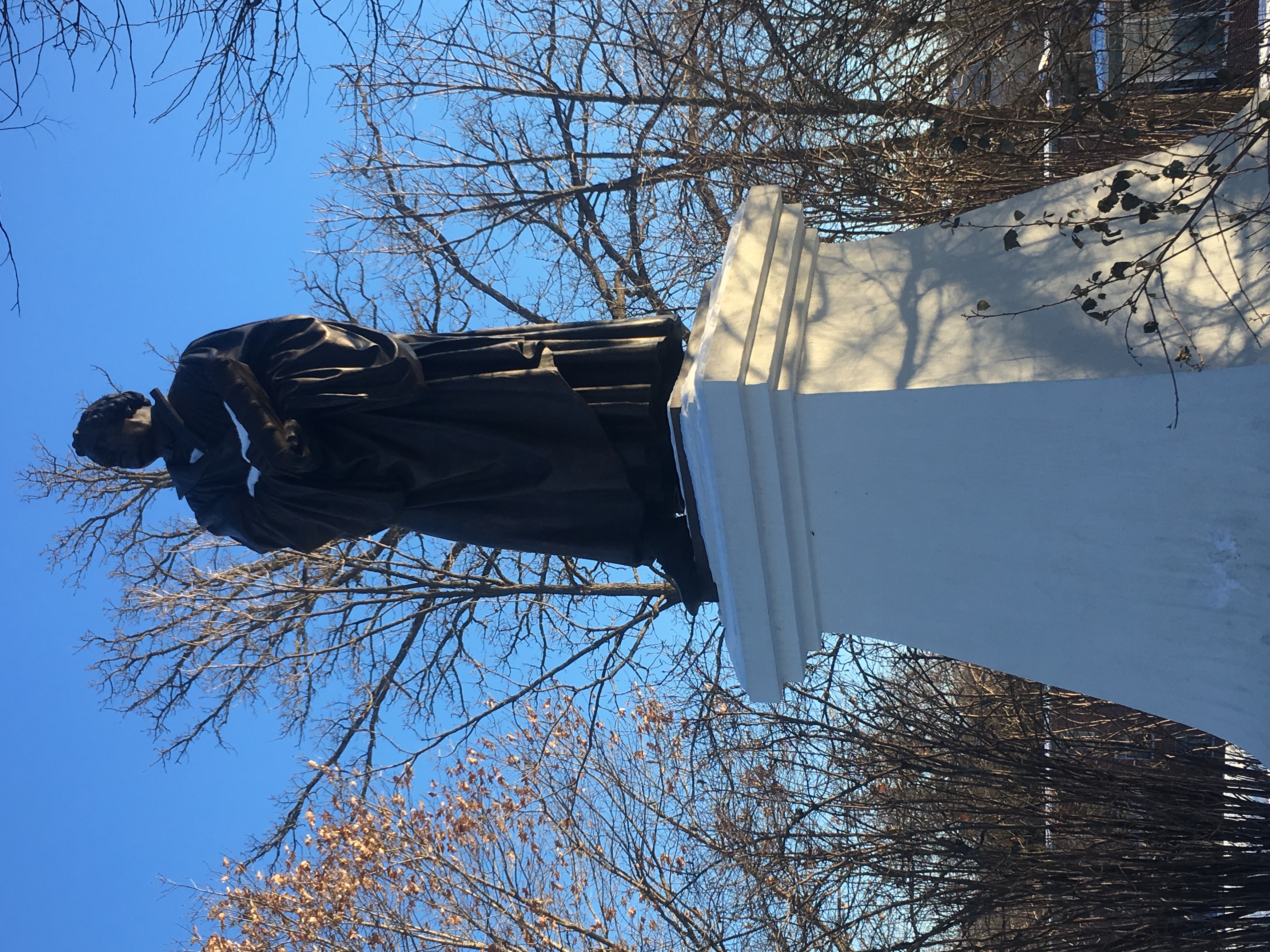Pictures mean lots of different things to each person based on their perspective. I think that my picture of the Martin Luther statue could be interpreted in many ways, but how is my perspective of my photo relevant? I will be using the Compositional Interpretation method to analyze this photo. This method is good for analyzing each element of a photograph. “Elements of compositional interpretation provide one way to increase the experiential, embodied response to visual images, because the method entails close attention to all aspects of the image itself; it is one way in which ‘sense experience can be learned and cultivated’ ” (Rose 58).
Similarly to Rachel’s photo, the colors in this photo have a low amount of saturation, aside from the sky behind it. Without the sky, the photo has a high value. I tried to take a photograph that had a similar feel. Unable to get to a cemetery, I found a statue on my college campus with some nature near it which I thought felt similar.
I tried to get the photograph in the same deep focus and it’s a little hard to tell, but it looks to me like both the background and the statue are in focus. In this statue of Martin Luther he is holding a book. It looks as if he is getting ready to give a presentation as he was a german professor. He also appears to be wearing a robe of some sort. This could be because he was also a monk.
The provenance of the statue I think is pretty unique. This statue is located right off of the sidewalk in front of my dorm. While I do attend a college related to Martin Luther, Luther College, there are not a lot of statues around campus and those that are on campus tend to be by important buildings. I find it interesting that this statue is not near any important buildings or related to any of the nearby buildings.
I also find it interesting that the color and material of the statue does not match the color and material of the podium he is standing on. It appears as if the statue is made of some sort of metal but the podium is not metal. The statue also looks very old and was probably created many years ago when the college was founded, but the podium shows no signs of aging. I wonder if the podium was built after the statue to make it higher than the students. When I was taking the picture, I had to look up at the statue. I think that it makes the Martin Luther statue seem more important and significant because it is higher. Similarly to when a painting of Jesus is placed higher in a church so that people look up to him, literally and metaphorically.
I think that this photo is similar to Rachel’s photo “Italian Cemetery Statue” because they both include a statue and plants. They also have some of the same features and some different features which help to make them both comparable.
This photograph is made up of a lot of small aspects that can be all put together and Structural-Functional Theory says that the photograph must include these to be complete. All these aspects can be viewed in many different ways though. This paper only includes my perspective on the photograph. “Interpretation is thus a mental process of acceptance and rejection of the meanings and associations that adhere to a given image and that make demands upon us through the force of dominant ideologies” (Sturken 78). This shows that each person views images differently and they do so by either accepting or rejecting meanings that are associated with the image. The viewer has the option to either accept or reject the meanings and that makes each person’s perspective unique to them.
Works Cited
Rose, Gillian. Visual Methodologies: An Introduction to Researching with Visual Materials. 4th
ed., Sage, 2016.
Sturken, Marita, and Lisa Cartwright. Practices of Looking An Introduction to Visual Culture.
3rd ed., Oxford, 2018.

Commentary on Rachel Tanur's Works: Italian Cemetery Statue